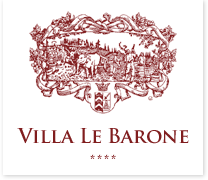
Are you sure you know Chianti? It is a blessed region of Tuscany: landscapes, art, wines and gastronomy! You have to come and come back again and again to discover all its facets. Villa le Barone has the chance to be in the heart of this corner of paradise!
Indeed there is a lot to discover in Chianti: sublime hillside landscapes, exquisite wines, authentic small villages, wonderful artistic heritage, and delectable gastronomy.
The stunning landscapes change with the seasons: tender green of the fields and sunny yellow of the broom in spring, yellow of the sunflowers in summer, ochres and the reds of the vines and vineyards in autumn. And, along the hills slopes, cypresses and olive trees, symbol of Tuscany! Pure air, perfumes, birdsongs, and church bells sounds guaranteed! Chianti is full of small churches, abbeys, hamlets and medieval villages, to be discovered along the roads.

Gastronomy is one of the pleasure of the lifestyle in Chianti , with the “antipasti” composed of various hors d’oeuvres, with the “bistecca alla fiorentina”, with the pecorino cheese, with the fresh and tasty vegetables and fruits, … And of course, there are the wines of Chianti, with a winemaking tradition that dates back to the 13th century. Most wineries and caves can be visited and wine tastings are a must!
Villa le Barone lies in the middle of the Chianti paradise… whether you are a walker, a cyclist, or driving a car, you will find at the Villa all the information you need to discover the many facets of Chianti!




